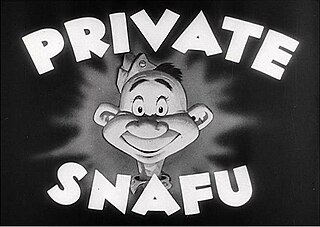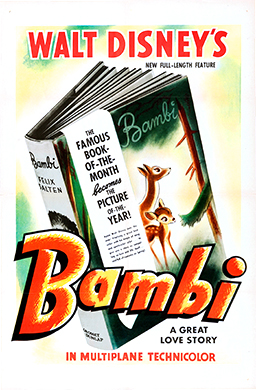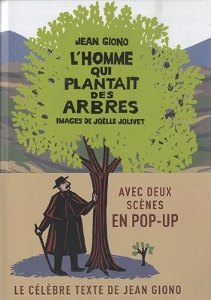Plot
The film opens with shots of large American forests and notes that forest are one of natures few renewable resources, if managed wisely. A generation ago, says the narrator, a few forward thinking citizens pressed for the establishment of the Forest Service, to make sure the timber would be around for their children and grandchildren.
Then the film moves on to the various uses of wood in the war, principally as replacements for items that Americans needed to go without. For instance, if all the steel forks, spoons and toiletries had to go, they could have wood replacements. If the military needed wool or cotton to make uniforms, wood could provide adequate clothing substitutes.
But there is a deadly enemy of wood: "you". The narrator informs the audience that its carelessness in throwing away cigarettes and not extinguishing campfires is a deadly enemy to wood. People are shown "being taken away from munitions plants" in order to put out the fire. Also tons of valuable war supplies (the lumber) would be destroyed.

Why We Fight is a series of seven propaganda films produced by the US Department of War from 1942 to 1945, during World War II. It was originally written for American soldiers to help them understand why the United States was involved in the war, but US President Franklin Roosevelt ordered distribution for public viewing.

Private Snafu is the title character of a series of black-and-white American instructional adult animated shorts, ironic and humorous in tone, that were produced between 1943 and 1945 during World War II. The films were designed to instruct service personnel about security, proper sanitation habits, booby traps and other military subjects, and to improve troop morale. Primarily, they demonstrate the negative consequences of doing things wrong. The main character's name is a play on the military slang acronym SNAFU, "Situation Normal: All Fucked Up". The cleaned-up version of that phrase, usually used on radio and in print, was "Situation Normal: All Fouled Up".

Raymond Ames Spruance was a United States Navy admiral during World War II. He commanded U.S. naval forces during the Battle of the Philippine Sea, one of the most significant naval battles of the Pacific Theatre. He also commanded Task Force 16 at the Battle of Midway, comprising the carriers Enterprise and Hornet. At Midway, dive bombers from Enterprise sank four larger carriers of the Imperial Japanese Navy. Most historians consider Midway the turning point of the Pacific War.

Hans Georg Conried Jr. was an American actor and comedian. He was known for providing the voices of George Darling and Captain Hook in Walt Disney's Peter Pan (1953), Snidely Whiplash in Jay Ward's Dudley Do-Right cartoons, Professor Waldo P. Wigglesworth in Ward's Hoppity Hooper cartoons, was host of Ward's "Fractured Flickers" and Professor Kropotkin on the radio and film versions of My Friend Irma. He also appeared as Uncle Tonoose on Danny Thomas' sitcom Make Room for Daddy, and twice on I Love Lucy.

Bambi is a 1942 American animated drama film produced by Walt Disney Productions and released by RKO Radio Pictures. It is based on the 1923 novel Bambi, a Life in the Woods by Austrian author and hunter Felix Salten. The film was produced by Walt Disney and directed by David Hand and a team of sequence directors.

The Dover Boys at Pimento University; or, The Rivals of Roquefort Hall is a 1942 Warner Bros. Merrie Melodies cartoon directed by Chuck Jones. The short was released on September 19, 1942. The cartoon is a parody of the Rover Boys, a popular juvenile fiction book series of the early 20th century.

The Man Who Planted Trees, also known as The Story of Elzéard Bouffier, is an allegorical tale by French author Jean Giono, published in 1953. It tells the story of one shepherd's long and successful singlehanded effort to re-forest a desolate valley in the foothills of the Alps, near Provence, throughout the first half of the 20th century. It was written in French, and first published in English. The story has become known worldwide and is seen as an inspiration for ecological regeneration brought about by man. In 1988, Frédéric Back won an Academy Award for the animated short film The Man Who Planted Trees. The film was published in two versions, French and English, and narrated respectively by actors Philippe Noiret and Christopher Plummer.

The United States home front during World War II supported the war effort in many ways, including a wide range of volunteer efforts and submitting to government-managed rationing and price controls. There was a general feeling of agreement that the sacrifices were for the national good during the war.

The Lookout Air Raids were minor but historic Japanese air raids that occurred in the mountains of Oregon, several miles outside Brookings during World War II.

The New Spirit is a 1942 American animated short film produced by Walt Disney Productions and the U.S. Department of the Treasury, and released by the War Activities Committee of the Motion Pictures Industry. The cartoon, which stars Donald Duck, was the first film created as part of Walt Disney's World War II propaganda production. It was commissioned by Henry Morgenthau Jr., then Secretary of the Treasury, to encourage American citizens to pay their income tax in support of the war effort. The film was directed by Wilfred Jackson and Ben Sharpsteen, and features Clarence Nash as the voice of Donald, Fred Shields as the radio announcer, and Cliff Edwards singing the theme song.

The Battle of Midway is a 1942 American short documentary film directed by John Ford. It is a montage of color footage of the Battle of Midway with voice overs of various narrators, including Johnny Governali, Donald Crisp, Henry Fonda, and Jane Darwell.

Henry Browne, Farmer is an American short propaganda film produced in 1942 about African-American contributions to the war effort during World War II. It is narrated by Canada Lee.

December 7th is a 1943 propaganda documentary film produced by the US Navy and directed by Gregg Toland and John Ford, about the December 7, 1941 attack on Pearl Harbor, the event which sparked the Pacific War and American involvement in World War II. Toland was also the film's cinematographer and co-writer. The original version of this film, with a running time of 82 minutes, was not released but was retained by the National Archives. An edited version of 32 minutes length, which removed a long introductory segment and a shorter epilogue, was given limited release to specific audiences but won the Academy Award for Best Documentary in 1944. This is the only film Toland ever worked on for which he received a director credit.

Going Home is part of the Private Snafu series of animated shorts produced by Warner Bros. during World War II. Made in 1944, the 4 minute cartoon features the vocal talents of Mel Blanc and was directed by Chuck Jones. The screenwriters for the Snafu cartoons were typically uncredited, though some animation historians believe that the writer of this short was Dr. Seuss.
Between 1941 and 1945, during World War II, Walt Disney was involved in the production of propaganda films for the U.S. government. The widespread familiarity of Disney's productions benefited the U.S. government in producing pro-American war propaganda in an effort to increase support for the war.

Beyond the Line of Duty is a 1942 American short propaganda film, directed by Lewis Seiler. The documentary film reenacted the life and career of United States Army Air Corps Captain Hewitt T. "Shorty" Wheless.

During World War II, the United States Army Air Forces established a series of airfields in Australia for the collective defense of the country, as well as for conducting offensive operations against the Imperial Japanese Army and Navy. From these airports and airfields in Australia, the Fifth Air Force was able to regroup, re-equip and begin offensive operations against the Empire of Japan after the disasters in the Philippines and Dutch East Indies during 1942.
At the beginning of World War II, the Royal Navy was the strongest navy in the world, with the largest number of warships built and with naval bases across the globe. It had over 15 battleships and battlecruisers, 7 aircraft carriers, 66 cruisers, 164 destroyers and 66 submarines. With a massive merchant navy, about a third of the world total, it also dominated shipping. The Royal Navy fought in every theatre from the Atlantic, Mediterranean, freezing Northern routes to Russia and the Pacific ocean.
World War II changed the possibilities for animation. Prior to the war, animation was mostly seen as a form of family entertainment. The attack on Pearl Harbor was a turning point in its utility. On December 8, 1941, the United States Army began working with Walt Disney at his studio, stationing Military personnel there for the duration of the war. The Army and Disney set about making various types of films for several different audiences. Most films meant for the public included some type of propaganda, while films for the troops included training and education about a given topic.

The Escape from Fort Stanton occurred on November 1, 1942, when four German sailors escaped from an internment camp at Fort Stanton, New Mexico. There were other minor escape attempts from the fort, however, the incident in November 1942 was the most successful and the only one to end with a shootout. One German was wounded as result and the three remaining prisoners were sent back to Fort Stanton.
















